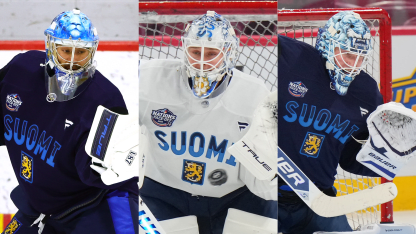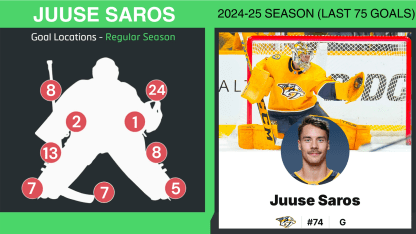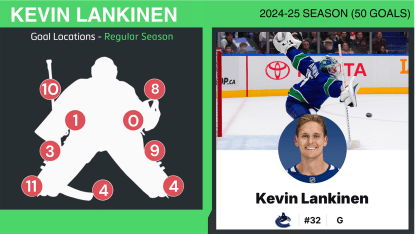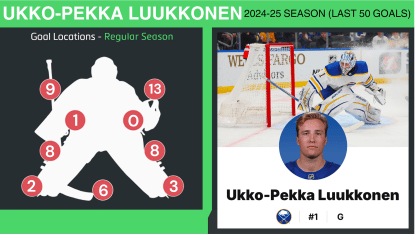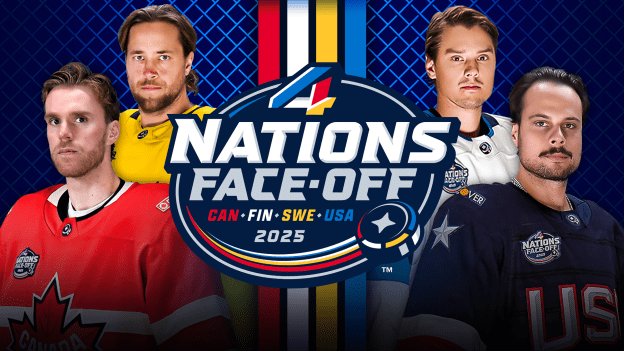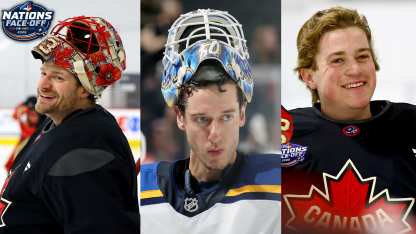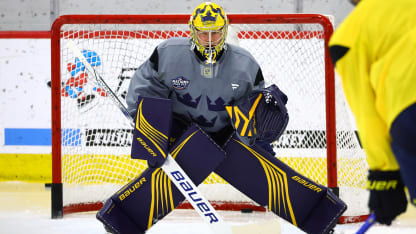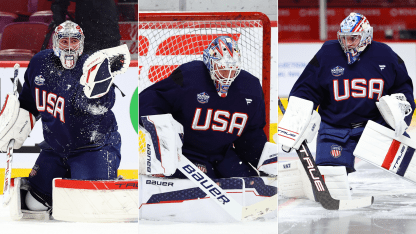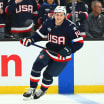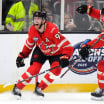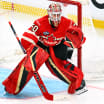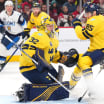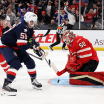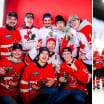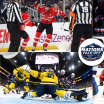High glove? It's impossible to ignore the 24 goals (32.0 percent) past Saros' glove, which is significantly more than the 23.6 percent average for the more than 8,000 goals tracked for this project since 2017, especially since Saros (5-foot-11) is the shortest goalie in the NHL. But it's also worth noting that only five of those high-glove goals came on clean looks, and many were a result of other primary factors, including screens (six) and lateral plays across the middle of the ice that were finished with one-timers (six), each circumstance in which most goalies frequently keep their glove down by the hip for more of a blocking save. As incredibly fast as Saros moves around his crease, shooters know they have to elevate even on those high-danger lateral feeds, otherwise they risk him making momentum-changing saves down low.
Low-high and lateral: There were 21 goals (28.0 percent) tracked off lateral plays and passes across the middle of the ice, and 14 were finished below the hash marks. Add in another 21 plays that included a low-high pass out or a pass from near or below the goal line and it makes sense to attack Saros from sharp angles and in tight. Such plays can create situations where he is caught outside his posts or transitioning in and out of his post-integration positions because his size prevents him from sitting in post-play tactics like the reverse-VH as early as often as some of his peers.
Screens and scrambles: Sight lines can be harder for Saros to find as a smaller goalie and he can get caught trying to look past the shoulders of taller players in front. He also has a habit of drifting back a bit in his crease behind the traffic, contributing to more open net for the 11 screen goals he allowed, as well as giving up net on several of the 15 scramble goals (20.0 percent), above the 14.0 percent tracked average. One thing a deeper positional approach seems to have reduced is the amount of times Saros gets stranded too high in his crease on second chances, an area the Vancouver Canucks targeted successfully during the first round of the 2024 Stanley Cup Playoffs by stretching him out wide in scramble-recovery situations. That tactic hasn't cost him as many goals this season.
Catch him moving: The slight drift in traffic is more prevalent off the rush, where he takes ice early and retreats with the speed of the attack, movement that can make even goalies that move as well as Saros a bit more vulnerable to shots and plays against the grain. There were 23 (30.7 percent) such plays in this sample, well above the 18.4 percent tracked average, including several off east-west passes where his impressive lateral speed left him past his angle.
Vancouver Canucks
The Canucks goalie is having a breakout season, proving the success he enjoyed playing a lot less behind Saros in Nashville the previous two seasons can indeed translate to a bigger role. He has a .905 save percentage and NHL career-best four shutouts in 34 games, three short of his single-season high set with the Chicago Blackhawks in 2020-21. Lankinen also is no stranger to success internationally, helping Finland win the gold medal at the 2019 IIHF World Championship with a .942 save percentage and two shutouts in eight games.
